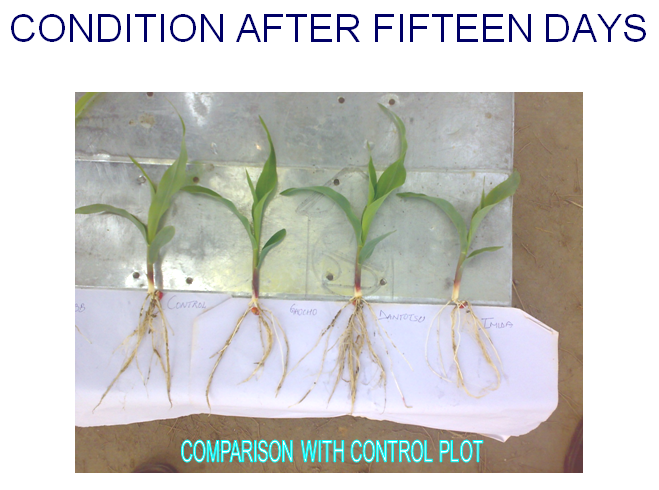What
is ProGibb?
Active
Ingredient is:
•
Gibberellic Acid (GA3)
•
Naturally occurring plant hormone
•
Promotes cell division and cell elongation
•
Improves early season plant vigor and helps plants
recover from stressful conditions caused
by adverse weather.
•
More crop vigor for increased Yield potential
•
Increased no of grains per cob
•
Increase in grain weight and overall grain Yield
Gibberellins:
•
Produced by natural fermentation
•
Fermentation utilizes natural strains of G. fujikuroi
selected for high GA3 production yield
•
Highly sophisticated fermentation and recovery processes
deliver a highly purified technical
grade
material
• In
the USA, gibberellins are classified as biologicals,
and are exempt of the requirement of
residue tolerance for all crops, rates and applications
ProGibb
Demonstrations:
Plot
selection:
1.
Select plot with proper germination
2.
Having good irrigation facility
3.
Soil should be fertile.
4.
Plot should be properly leveled
Method:
Time
of application :
Crop
satge : 4-7 leaf stage (20-25DAS)
Dosages
: 7g/acre
Process:
1.
Dissolve promix in 1 lt water
2.
Add ProGibb to promix solution and
stir well to have uniform solution
3.
Add water to ProGibb solution to Make final volume 8Lt.
4.
Fill half tank of Knapsack sprayer with water and add 1Lt ProGibb solution.
Fill the tank with water and spray in the field. Total 8 tanks required
per acre for thorough spraying.
Field
visit:
Time
: Visit plots at cob maturity and look for following parameters:
1.
Cob length : Measure
cob length for 20 cobs from ProGibb treated and non-treated plots
2.
Column in each cob: Count
no. of column from 25 cobs from each plot
3.
No. of grains: Count
no. of grains from 10 cobs from treated as well as untreated plots.
4.
Weight of grains: Weigh
grains from 10 cobs from each plot.
Important
things to consider
1.
Field should not have any kind of fertilizer/moisture stress
2.
Proper dose and water volume
3.
Don’t mix any foliar fertilizer, copper or sulphur fungicide along
with ProGibb application.
4.
Spraying should be done during morning or evening hours.
Remember
Early application always pay more ProGibb
in Maize Crop
•
Spray ProGibb on 20-25 days crop that’s when there is 5-8 leaf
stage.
•
Dose - 1 gm per spray pump and farmer is using 6-7 pumps per
acre.
•
Farmer is asking for broadcasting method, but it is observed that
Maize is growing mostly as rain- fed crop, so ProGibb application
with broadcasting is possible only when there is optimum
moisture in the soil.(Will test ProGibb as broadcast method 10
gm per acre in irrigated area in next season)
•
Used flat- fan or holo-cone type nozzle in application.
•
Field free from weeds and water stress condition.
Instructions:
•
ProGibb should be mixed in ProMix solution first .
• At
spraying time, optimum moisture content in the soil gives better result.
•
Check the field conditions thoroughly before claiming about ProGibb result like
a) In
low land area where water drainage is not good ProGibb is not giving good results.
b) In
field where there is stalk -rot problem or same hybrid is growing from so many
years ProGibb result can be affected.
c) In
fields where there is shadow of trees , the ProGibb result is less visible.
•
During ProGibb spray the insect attack should be checked i.e. during this stage
farmer is using products for early shoot fly ,borer ,termite and beetle so
DanTotsu and DaniTol can be promoted for better control.
• In
field shows , its better if farmer starts telling about difference between ProGibb
and untreated ,sometimes he explains better!!!
Hence, ProGibb
gives yield equal to 11 Acres from 10 Acres of land. i.e. ProGibb
can increase 10% of farmer holding of -course by 10 %
minimum extra yield.
#These blogs were written as a part of the internship program at Sumitomo Chemicals.






























